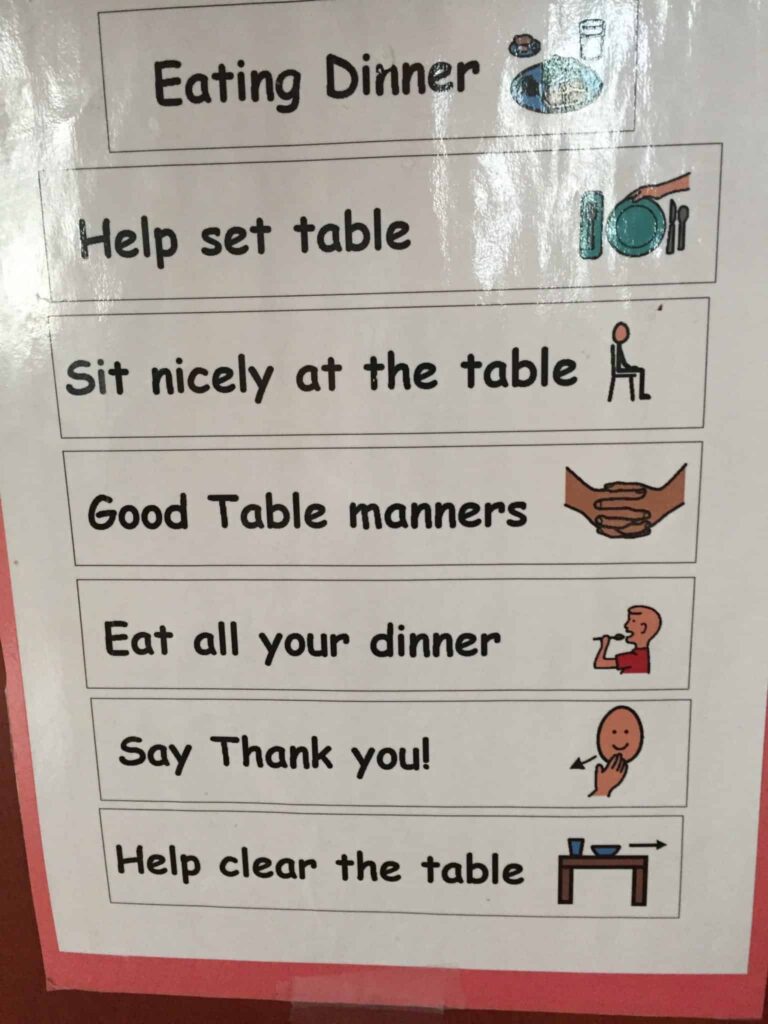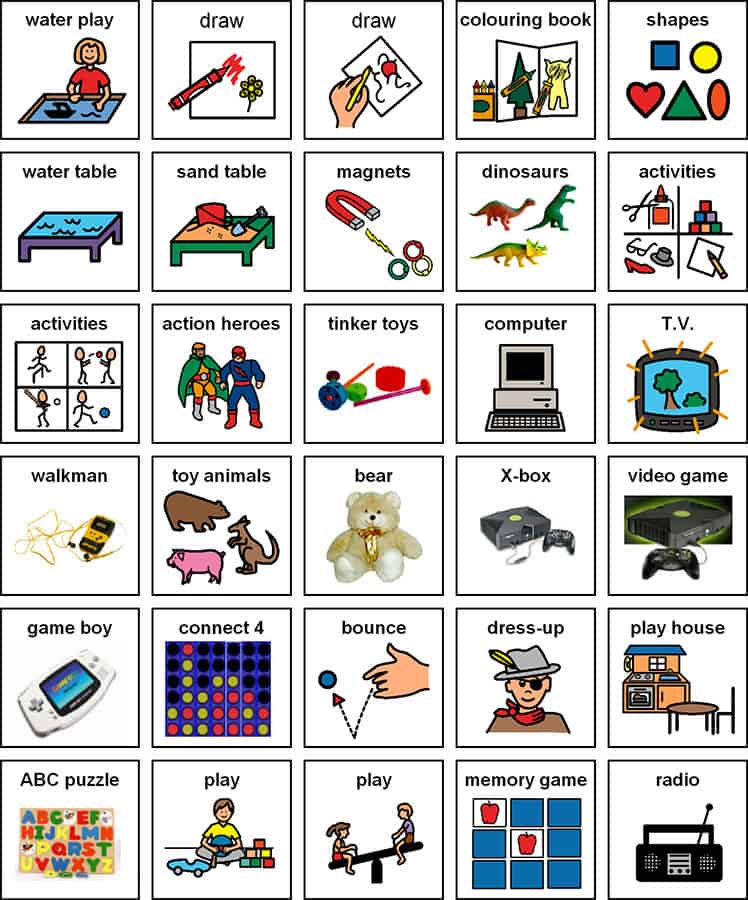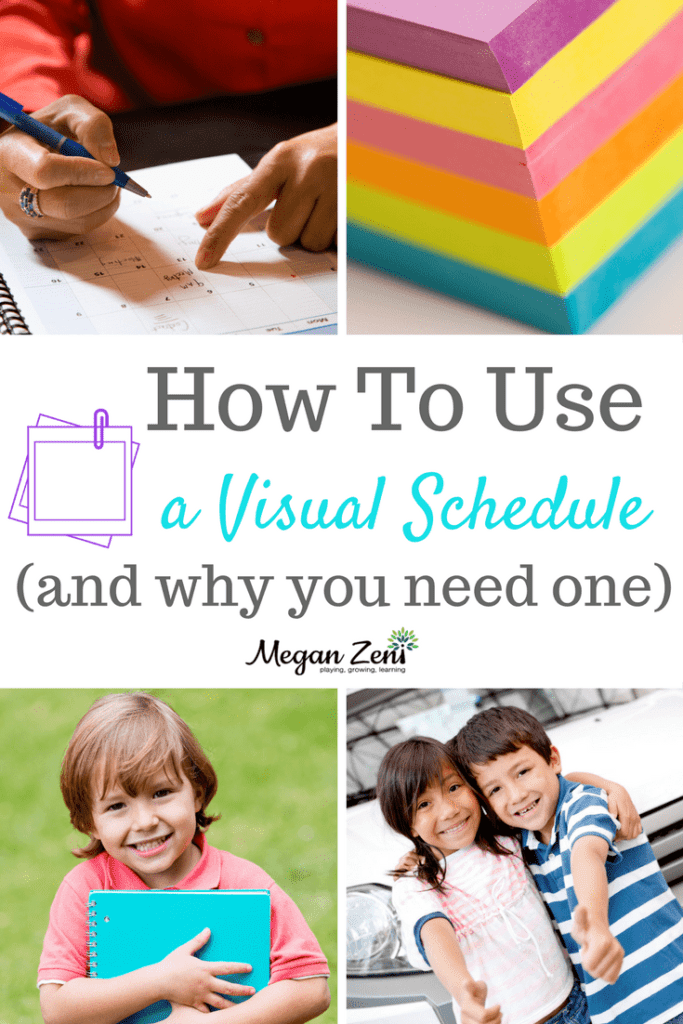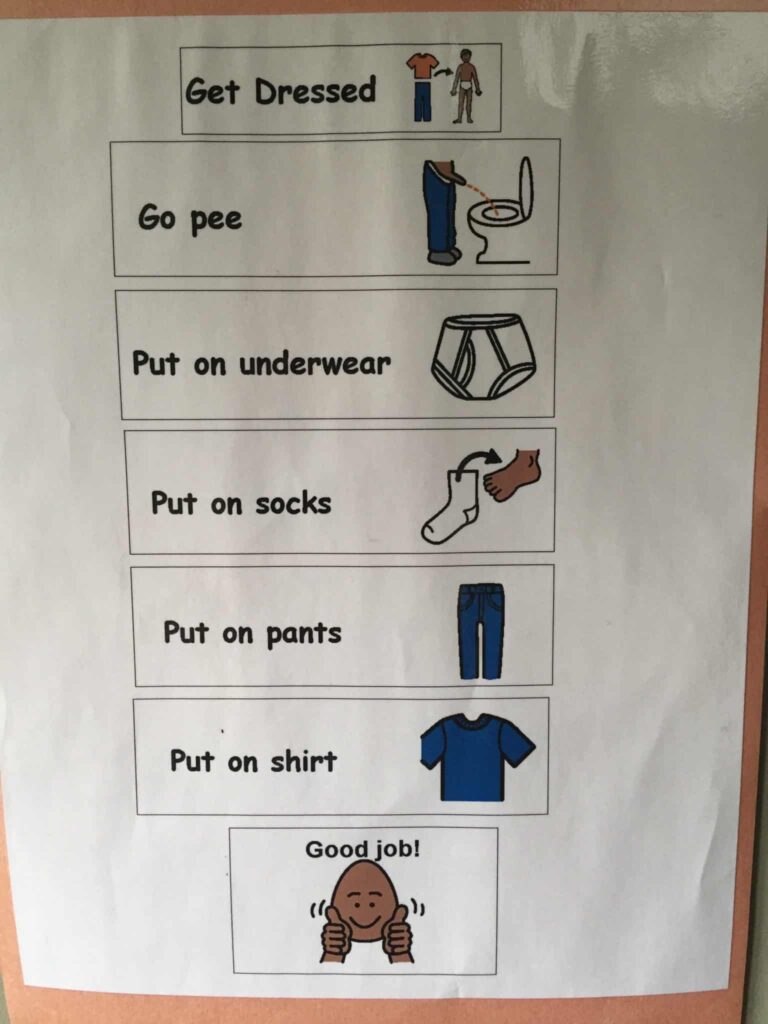- filed under: Family Life, Organizing Tips & Tricks
How to Use a Visual Schedule (and why you need one!)
How To Use A Visual Schedule
Every comedian who tells the tale of a child-less couple breezing out the door is guaranteed to get loads of laughs from the parents in the audience. We all struggle with the insanity of getting out the door with kids of any age. And there’s always an inverse relationship between the amount of time you have to get somewhere and your child’s willingness to go there. At school, we have time-tested strategies for transitions that make the mass movement of children easier and more routine. At home, the best tip I can give you is to develop a few visual schedules for your kids to unpack the steps involved in any multi-step process.
What is a Visual Schedule?
A visual schedule is a tool with images for non-readers that helps children understand what is or should be happening next. Visual schedules are widely used in the autism community, but their benefits are certainly appropriate for ALL children. Visual schedules are sometimes referred to as social stories and there are a variety of ways to make and use these transition tools. Telling a two year old to “get dressed” is a tall order. Your child may have the desire and skills to get dressed but no experience breaking a complex task into small steps with a sensible sequence. A visual schedule helps reduce frustration for everyone; Parents are not repeating themselves eight hundred times and kids feel a sense of pride in being able to complete a task independently. You can use clip art, photographs or drawings to represent the action. For pre or early readers it is a good idea to add text beside the images to increase environmental print in the home. For developmentally young children it can be helpful to have each action on a double sided velcro tab so the action can be turned over to show each step is completed along the way.
Why Use a Visual Schedule?
I’ve found visual schedules to be invaluable in reducing frustration in our home because expectations are much more clear. Once I’ve introduced a schedule, the kids just refer to it instead of inventing excuses for why they forgot, or didn’t do whatever I wanted them to complete independently. The schedules can be as detailed as you want. This eating dinner schedule focuses more on what happens once the table is set. The table setting schedule is gone now that everyone knows how to set the table. Visual schedules can be invaluable for getting teens out the door too. Lists by the door with all the gear, equipment and snacks they need to pack for the rink, pool or field makes sure there isn’t a scramble or desperate phone call for forgotten gear. I have one friend who writes out the list on a ID luggage tag. It is tucked in a pocket of the hockey bag, but always there for a quick scan of what is needed.
Resources for Visual Schedules:
Order a pre-made visual schedule from Easy Daysies!
This responsibility chart from Melissa and Doug is very popular.
Love to Know has a free visual schedule for brushing teeth
Boardmaker is what schools and therapists use for images
Autism.net has loads of boardmaker style FREE images
amzn_assoc_placement = “adunit0”;
amzn_assoc_tracking_id = “roomtoplay07-20”;
amzn_assoc_ad_mode = “manual”;
amzn_assoc_ad_type = “smart”;
amzn_assoc_marketplace = “amazon”;
amzn_assoc_region = “US”;
amzn_assoc_title = “My Amazon Picks”;
amzn_assoc_linkid = “89f5ad4f7ed5804db8780f7d8f44ad98”;
amzn_assoc_asins = “B00FQPLWBU,B01ALIQY1E,B06Y6QGW9B,B01N327AAY”;
amzn_assoc_search_bar = “true”;
Don’t make it too complicated! And if you’d like more inspiration for organizing your family life, come join me over on Pinterest for new and innovative ideas from around the web:


